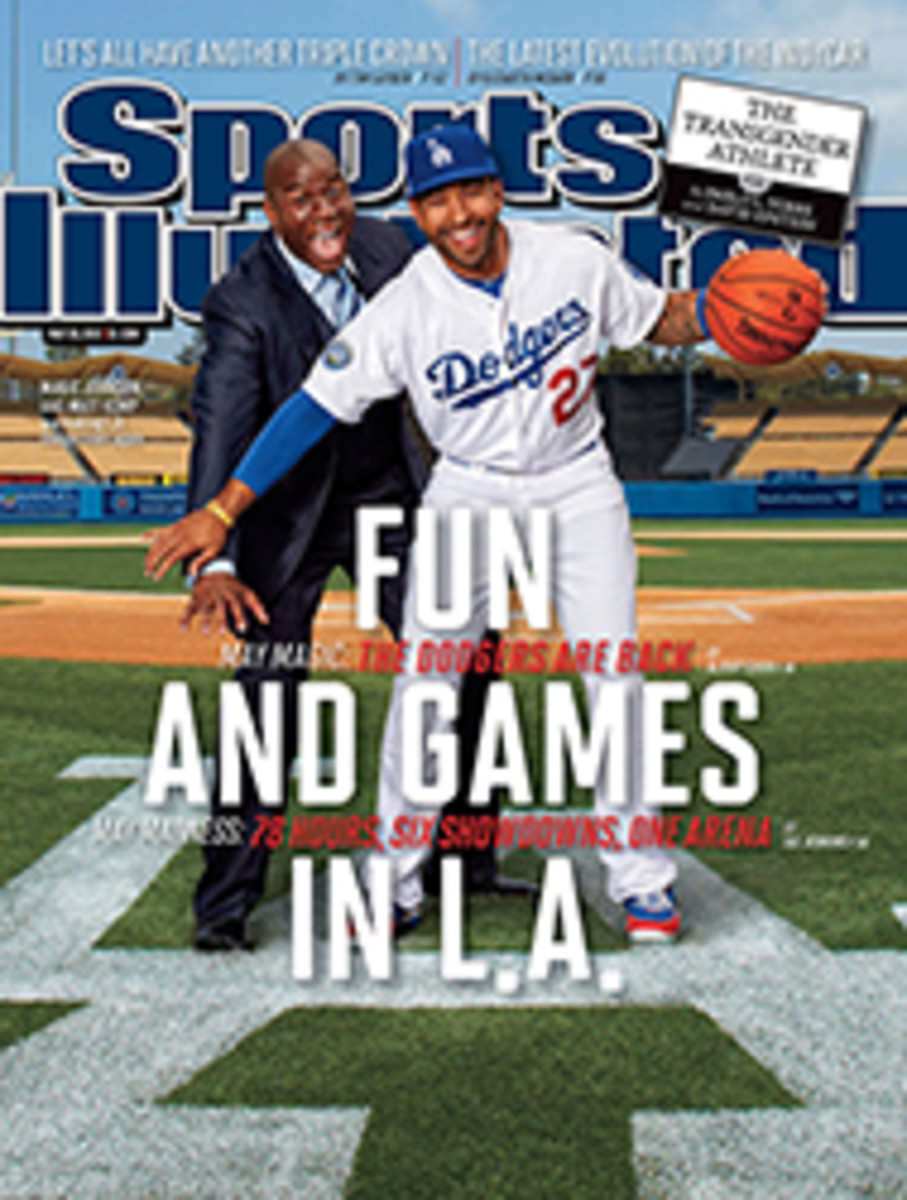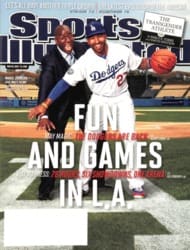
BACK IN CONTROL
He was never alone, not in those first hours. After JR Hildebrand climbed from the ruined Panther Racing car that had slid across last year's Indy 500 finish line in a hail of sparks, he rode in an ambulance to the infield care center, feeling physically fine but emotionally broken. Once released, he walked to the garage, where he tearfully apologized to his crew for crashing on the last turn of the final lap while holding a four-second lead—commensurate to a country mile in IndyCar—over Dan Wheldon. After embracing his team owner, John Barnes, who had just finished second in the 500 for the fourth straight year, the rookie driver spoke to the media for 10 minutes, answering questions about what it felt like to blow a surefire victory at the biggest race in the world.
That evening, while dining with family and friends in downtown Indianapolis, he looked up from the table to a television replaying the crash in a seemingly endless loop. Nearly a year later that moment remains locked in his brain. "This was something that wasn't going to go away," Hildebrand, 24, says. "I knew that I was going to have to be ready to talk about this for a long, long time."
The initial reaction to the crash—from screaming heads vilifying him on ESPN to comedians suggesting that he was texting as he headed into the final lap—was that Hildebrand had committed the biggest blunder in the history of American racing. But had he?
GROWING UP in Sausalito, Calif., Hildebrand was as much bookworm as gearhead. He won the grand prize at the 2004 Marin County Secondary Science Fair for his study on how weather and fuel affected the performance of his go-kart, which he had begun racing at 14. Three years later, when he was a junior at Redwood High, Hildebrand spent several weeks racing in England. He could often be seen on pit road with his face buried in a math textbook.
As a senior Hildebrand was a National Merit scholar, with a 4.12 GPA. He knew he wanted to race, but on a whim he applied to MIT. He was accepted, but he deferred enrollment. "I felt like I had to give racing a chance," he says.
It was Hildebrand's cerebral racing style that first caught the eye of Barnes, the owner of IndyCar's Panther Racing. As Hildebrand was winning the 2009 season championship in Indy Lights—a feeder series into IndyCar—he would stalk Barnes at the track. "He'd even talk to me in the bathroom," Barnes recalls. "What separates JR from the rest is what's between his ears."
IT'S A GRAY April day, and Hildebrand is behind the wheel of his 2012 silver Chevy Tahoe, speeding on highway 56 toward Indianapolis. He makes a pass at 90 mph while cresting a hill—quickening the pulse of his two passengers—and then begins the tale of how he crashed in last year's 500. "With 42 laps to go, the caution flag came out," Hildebrand says. "We had gotten good fuel mileage all month [in practice]. So when we went to pit road for fuel, we knew we might be one of the only cars that could make it [to the finish] without stopping."
The strategy worked: With three laps left, Hildebrand took the lead when Bertrand Baguette pitted for gas. Now all Hildebrand needed to do was stretch his fuel mileage and hold off Wheldon. (Wheldon was killed in a crash at Las Vegas Motor Speedway last Oct. 16.) Hildebrand took the white flag, signaling the final lap of the race. In a suite along the frontstretch his father, John, gazed down at Turn 4, waiting for his son to appear and cruise across the finish line. Back in San Francisco one of John's colleagues at PricewaterhouseCoopers began typing John a congratulatory text.
Hildebrand sped into Turn 3 at 222 mph. At the midway point of the corner he suddenly saw Charlie Kimball, in the number 83 car, directly ahead of him. Kimball was going so slowly—only 126 mph—that Hildebrand's spotter assumed he was going to enter pit road, which starts just before Turn 4.
But Kimball, with his tank nearly empty and simply hoping to reach the finish, rolled by the pit road entrance. He was just outside the main racing groove as he puttered into Turn 4. "When I see him as a I exit Turn 3, I have less than a second to make a decision," Hildebrand says. "Option one is to jam on the brakes and follow him into the turn. But I know that Wheldon is coming fast. Option two is try to pass him on the outside. The thought in my head is that I'm not going to pussyfoot this thing through the final corner and get passed."
This had been Hildebrand's longest run without a pit stop for fresh tires. When he darted high to pass Kimball, he rolled through "the marbles"—the bits of rubber that accumulate on the high line of the track late in races—and his worn-out tires lost grip. Suddenly, it was as if he were sliding on ice. He slammed into the wall and was passed by Wheldon 200 yards from the finish line.
Does Kimball feel as if he was at fault? "No," he says. "If the roles were reversed, neither of us would have done anything differently."
After the race Hildebrand refused to blame anyone but himself. He spoke eloquently to any microphone or tape recorder that was pushed into his face, saying his only regret was that he didn't win for his team. Hildebrand began receiving dozens of e-mails, letters and texts from teachers praising him for showing kids how to act when gripped by disappointment. "The worst feeling in the world as an athlete is not closing things out," says Hildebrand. "But I knew it was in my hands how people reacted to me, so I wanted to be thoughtful and serious about it. I accepted the situation."
Hildebrand has yet to win on the IndyCar circuit and is seventh in the standings; he'll start this year's Indy 500 in the 18th position. In the first test session for the race he ran the fastest draft-free lap. "Getting back in the car for the race will be wonderful," he says. "You can't live in the past. All you can hope for is to have another chance."
On Sunday, JR Hildebrand gets just that.
Follow @LarsAndersonSI
SUPERCARS
Turn the page for the latest evolution of the Indy car
PHOTO
Photograph by TODD ROSENBERG
CEREBRAL VORTEX Hildebrand's driving intellect is one of his strengths, but a split-second decision gone wrong sent him sliding into the wall (inset) just short of the 2011 Indy finish line.
PHOTO
FRED VUICH (CRASH)
[See caption above]
PHOTO

